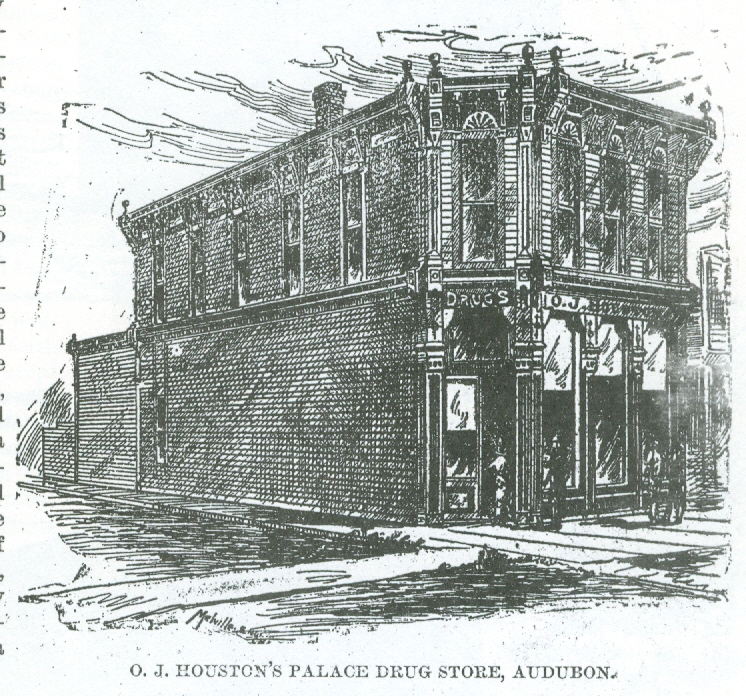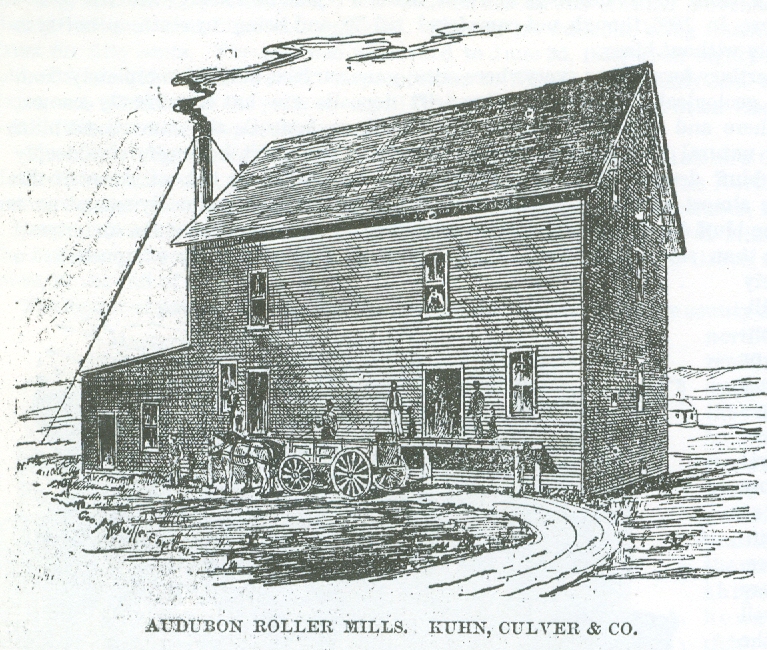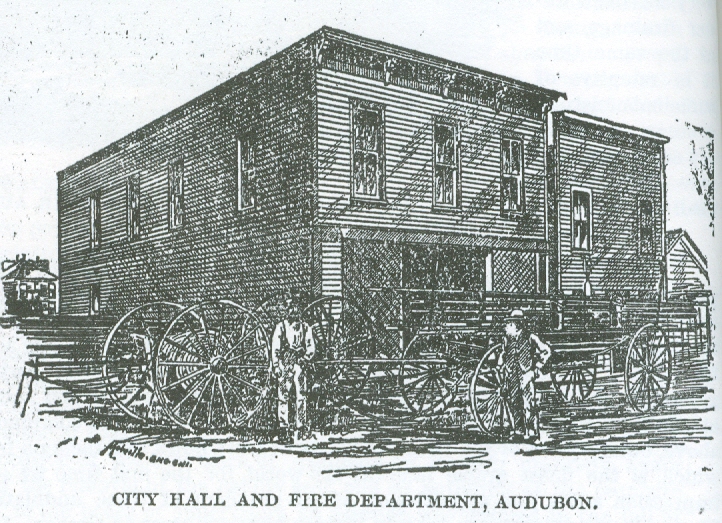Audubon County |
Home History > 1887 Audubon |
GEOLOGICAL. WE QUOTE from White's Geology of Iowa, being a report of a survey ordered by the legislature in 1866, though not completed till '70, and being by state authority it is entirely without bias. "The Post-tertiary formations everywhere occupy the surface, burying completely from view the older geological formations. The drift deposits are but imperfectly known, appearing only here and there at frequent intervals from beneath the more recent bluff formations, and natural sections are rarely met with. The drift, however, is so deeply covered by the bluff deposit that it has no influence in modifying the soil, even in the valleys, which is almost wholly derived from the bluff deposit and uniformly spread over the surface. The bluff deposit attains a thickness probably equal to that of the underlying drift, or not less than seventy-five feet. It here presents a uniformity in composition--a light colored, finely comminuted, silicious deposit, containing more or less calcareous matter, and forms a very excellent soil. The soil could not be more fertile, except so rendered by artificial means. Cereals and corn are particularly well adapted for the soil of this region, whose fineness and depth affords a very thorough under drainage, and at the same time it is retentive of sufficient moisture, even in unusually dry seasons, to ensure at least a medium crop.. "From the summit of the great divide in the north part of the county, a magnificent panorama of the surrounding country is commanded. In the west, southwest and south, the eye scans the distant horizon which is bounded by a lofty prairie barrier enveloped in the uncertain, shimmering haze of a summer's day, and seeming like a vast rim bounding the further outline of an immense shallow basin, whose middle portion is occupied by gracefully undulating prairie swells, which rise and fall, one beyond another, until distance blends the whole into lines of light and shaddow. [sic shadow] When one commands a view like the above, outstretched over a radius of thirty or forty miles, embracing a region, every acre of which is the finest arable land in the world, for the first time we gain an intelligible impression and a just appreciation of the grandeur of these undulating, trecless plains. The county is estimated to contain sixteen hundred acres of timber. Hamlin's Grove and the grove near Exira are the largest. Along the larger streams, narrow belts of timber occur at intervals, and upon the upland slopes, considerable areas are occupied by growths of burr and red oak. "The largest stream is East Nishnabotna, which flows from north to south, dividing the county nearly equally, and presenting a valley of unsurpassed beauty and fertility. It has a number of valuable tributaries, among which are David's, Troublesome, Blue Grass and Gifford Creeks. The south-east townships are watered and drained by Crooked, Hamlin's and Frost creeks, all tributaries of Troublesome Creek. South Raccoon River has its sourcein the north-east part of this county, while among other streams of sufficient importance to have received names are Whitted, Indian and Buck Creeks. The streams mentioned pass through and drain every township in the county, and, with other branches not mentioned, form an admirable system of natural drainage, and afford pure living water for stock at all seasons of the year. The county is also noted for the excellent character of itsw springs, which are found along all the valleys. Wells are everywhere easily obtained. The Nishnabotna affords good water power." The interior of Mother Earth, in this locality, is not less productive than its surface, or less prolific of the materials which by the supreme plan are calculated to minister to the needs and comfort of man. On the Missouri slope coal may be found in paying quantities, at an uncertain depth, which, according to the intelligent testimony of an expert, does not exceed eight hundred feet. The same authority states that an artesian well may be secured at a depth of less than one thousand feet. These agencies of nature will no doubt be employed, as they easily may be, when the needs shall be demanded by development, and add their inestimable value to the finest and best agricultural resources in the world. Transcribed September, 2024 by Cheryl Siebrass from History of Audubon and Audubon County, Iowa, The Eden of the West., 1887, pp. 7-9. |
Site Terms, Conditions & Disclaimer>



